 Limited Edition Golden Llama is here! Check out how you can get one.
Limited Edition Golden Llama is here! Check out how you can get one.  Limited Edition Golden Llama is here! Check out how you can get one.
Limited Edition Golden Llama is here! Check out how you can get one.
 Offering SPR-BLI Services - Proteins provided for free!
Offering SPR-BLI Services - Proteins provided for free! Get your ComboX free sample to test now!
Get your ComboX free sample to test now!
 Time Limited Offer: Welcome Gift for New Customers !
Time Limited Offer: Welcome Gift for New Customers !  Shipping Price Reduction for EU Regions
Shipping Price Reduction for EU Regions
> IL-2- und IL-2-Rezeptor-Proteine

Interleukin-2 (IL-2) ist ein pluripotentes Zytokin, das eine entscheidende Rolle bei der Reaktion des Immunsystems spielt. Der IL-2-Rezeptor (IL-2R) ist ein heterotrimeres Protein, welcher auf der Oberfläche bestimmter Immunzellen wie Lymphozyten exprimiert wird und der IL-2 bindet und darauf reagiert.
IL-2R besteht aus drei Untereinheiten, nämlich IL-2Rα (CD25), IL-2Rβ (CD122) und gemeinsames γc (CD132). Die drei Rezeptorketten werden auf verschiedenen Zelltypen getrennt und unterschiedlich exprimiert und können sich in unterschiedlichen Kombinationen und Reihenfolgen zusammensetzen, um IL-2-Rezeptoren mit niedriger, mittlerer und hoher Affinität zu erzeugen.
Viele Biopharma- und Biotech-Unternehmen haben verschiedene IL-2-Modifikationen und -Designs entwickelt, einschließlich PEG-Modifikation, Fusions-Fc, IL-2-Mutantendesign, bispezifisches Antikörperdesign sowie eine kombinierte Immunisierungs-Checkpoint-Antikörper-Medikamententherapie und andere Strategien.
Daher sind eine Reihe von strukturstabilen und hochaffinen IL-2-Rezeptor-Heterodimeren und Heterotrimeren von großer Bedeutung für in-vitro Studien zur Wechselwirkung zwischen IL-2 und IL-2-Rezeptoren und ebenso für die Antikörperimmunisierung und das Screening.
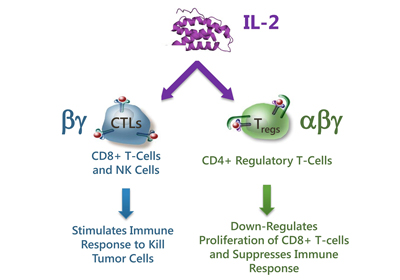
Fig.1 Native IL-2 has pleiotropic effects on the immune response[1]
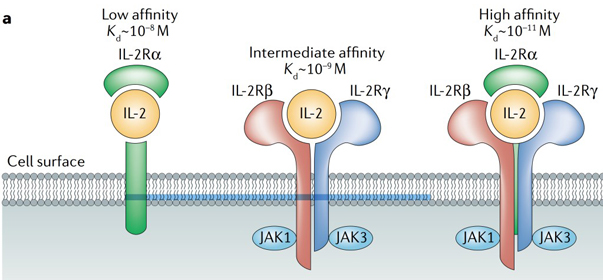
Fig 2. Schematic of IL-2 binding to the low-affinity, intermediate-affinity and high-affinity IL-2 receptors. The high-affinity receptor comprises IL-2 receptor α-chain (IL-2Rα), IL-2Rβ and IL-2Rγ.[2]
ACROBiosystems has developed a series of IL-2 related proteins: IL-2, IL-2Rα (CD25), IL-2Rβ (CD122), IL-2Rγ (CD132), IL-2 R βγ heterodimer, IL-2Rαβγ heterotrimer with high purity, high stability and high bioactivity, which can be used to research the interaction between IL-2 and IL-2 receptors, immunization, antibody screening, etc., to facilitate the development of IL-2 related drugs. In addition, we can also provide GMP-grade IL-2 used for scale-up culturing of various cell types such as T/NK cells and iPSCs.
| Molekül | Kat. Nr. | Host | Produktbeschreibung | Struktur |
|---|
| Molekül | Kat. Nr. | Host | Produktbeschreibung | Struktur |
|---|
| Molekül | Kat. Nr. | Host | Produktbeschreibung | Struktur |
|---|
| Molekül | Kat. Nr. | Host | Produktbeschreibung | Struktur |
|---|
| Molekül | Kat. Nr. | Host | Produktbeschreibung | Struktur |
|---|
| Molekül | Kat. Nr. | Host | Produktbeschreibung | Struktur |
|---|
Table 1 Affinity of IL-2 binding to IL-2R (SPR) |
||||
IL-2 R |
||||
Affinity to Human IL-2 |
40.6 pM |
0.279 nM |
29.9 nM |
377 nM |
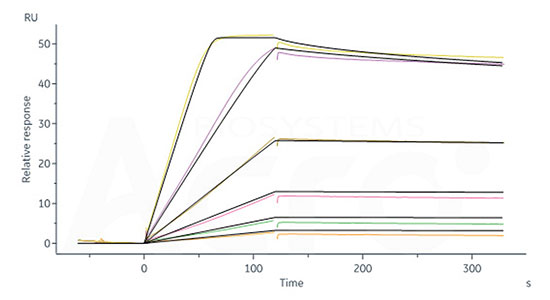
Human IL-2RB&IL-2RA&IL-2RG, Fc Tag&Fc Tag (Cat. No. ILG-H5257) captured on CM5 chip via Anti-human IgG Fc antibodies surface can bind Human IL-2, Tag Free with an affinity constant of 40.6 pM as determined in a SPR assay (Biacore 8K) (Routinely tested).
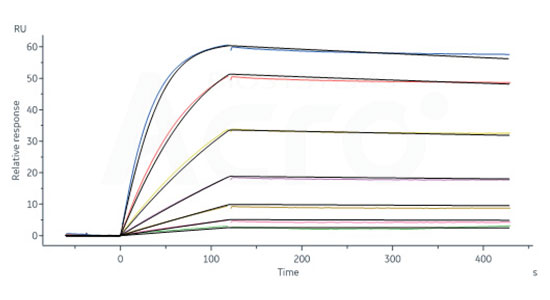
Human IL-2RB&IL-2RG Heterodimer Protein, Fc Tag&Fc Tag (Cat. No. ILG-H5254) captured on CM5 chip via Anti-human IgG Fc antibodies surface can bind Human IL-2, Tag Free with an affinity constant of 0.279 nM as determined in a SPR assay (Biacore 8K) (Routinely tested).
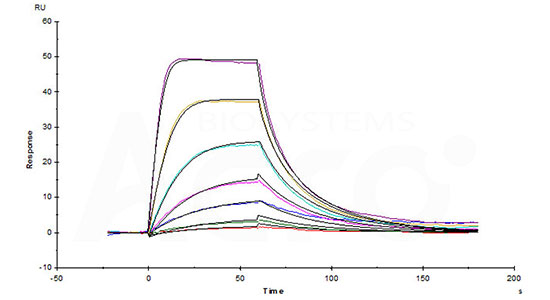
Human IL-2 R alpha, His Tag (Cat. No. ILA-H52H9) captured on CM5 chip via anti-His antibody, can bind Human IL-2, Tag Free with an affinity constant of 29.9 nM as determined in a SPR assay (Biacore T200) (Routinely tested).

The purity of Human IL-2RB&IL-2RG Heterodimer Protein, Fc Tag&Fc Tag (MALS verified)(Cat. No. ILG-H5254) is more than 90% and the molecular weight of this protein is around 145-165 kDa verified by SEC-MALS.
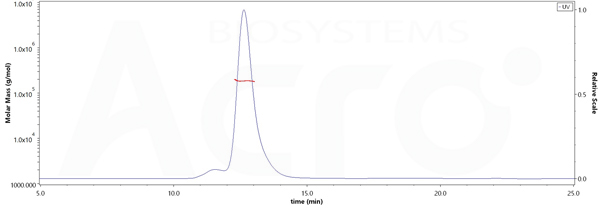
The purity of Human IL-2RB&IL-2RA&IL-2RG, Fc Tag&Fc Tag(Cat. No. ILG-H5257) is more than 90% and the molecular weight of this protein is around 175-190 kDa verified by SEC-MALS.
Referenz:
1. NKTR-2017JPMorganSlides
2. Spolski R, et al. Nat Rev Immunol. 2018. PMID: 30089912 Review.
3. Xinquan Wang et al.,2005, Science. 310(5751):1159-63.
4. Balasubramanian, S. Int Immunol. 1995 Nov;7(11):1839-49.
This web search service is supported by Google Inc.
